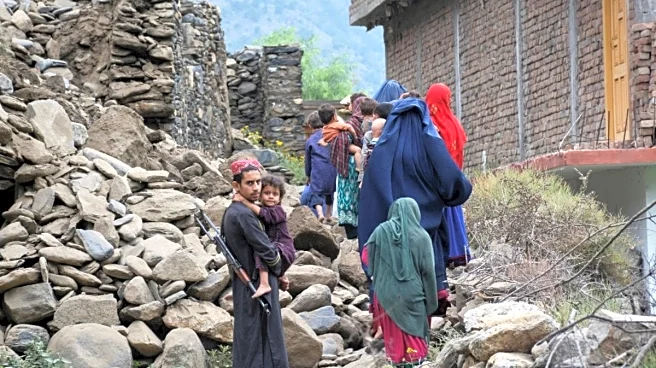When floods, earthquakes, or pandemics strike, the damage is immediately visible collapsed homes, uprooted trees, shattered lives. Yet, beneath the visible wreckage lies another kind of destruction, one
that unfolds silently inside the human brain. Natural disasters not only disrupt physical environments but also leave lasting neurological imprints, reshaping how the brain functions long after the event has passed.
Trauma Changes the Brain’s Architecture
According to Dr Jayanth S. S., Consultant Neurologist, Apollo Hospitals, Sheshadripuram, “Severe stress may change the connections between crucial brain regions such as the amygdala and the hippocampus, which regulate fear and memory.” This disruption can trap survivors in a mental replay of the traumatic event. One flood survivor from Karnataka described feeling “mentally trapped in replay,” as if her brain refused to move beyond the experience even after the waters receded.
Such changes interfere with focus, decision-making, and emotional balance. “Trauma rewires neural pathways,” explains Dr. Jayanth, “and the altered brain circuits can make it difficult to distinguish between real danger and remembered fear.”
Sleep Disturbance: The Brain’s Early Warning System
Among survivors, one of the most common and telling symptoms is disturbed sleep. “Nightmares, panic awakenings, or insomnia are not just signs of distress, they are the brain’s neurological SOS,” says Dr. Jayanth. Sleep is when the brain restores itself, and when this repair mechanism is disrupted, the brain remains on high alert. Over time, this can weaken its ability to handle future stress and increase the risk of anxiety and depression.
Dr. Anuvinda Sadanandan, Consultant Psycho-Oncologist, Apollo Hospital, Bannerghatta Road, echoes this observation, “Sleep interruption is the brain’s signal that it’s still locked in survival mode. Without proper rest, the brain cannot process emotions or memories effectively, worsening mood swings and stress.”
PTSD: Where Mind and Body Intersect
Post-Traumatic Stress Disorder (PTSD) is increasingly being recognized not just as a psychological condition but as a neurological and physiological one. “Under disaster-induced stress, the brain’s alarm center, the amygdala goes into overdrive, while the prefrontal cortex, responsible for rational thinking, temporarily shuts down,” explains Dr. Anuvinda. This imbalance may persist long after the crisis, leaving survivors feeling constantly tense, anxious, or emotionally numb.
As Dr. Jayanth notes, “The secretion of stress hormones like cortisol and adrenaline doesn’t just affect mood, it alters body chemistry.” These changes can contribute to physical illnesses such as heart disease and diabetes, reinforcing how deeply the mind and body are interlinked.
Children: The Most Vulnerable Brains
Both experts highlight that children often bear the deepest and longest-lasting neurological scars. “Early trauma can interfere with a child’s emotional regulation, learning capacity, and overall brain development,” warns Dr. Jayanth. Teachers in disaster-hit areas often report children with poor attention spans, erratic moods, and learning difficulties, subtle signs of disrupted brain function.
Dr. Anuvinda adds, “Children’s developing brains are like soft clay, they absorb the shock more deeply. Yet, with love, stability, and a sense of safety, they also show the highest potential for recovery.”
The Path to Healing: Rewiring the Brain
Despite the profound impact of trauma, the brain’s plasticity, its ability to reorganize and form new connections offers hope. “Therapy, mindfulness, and timely medication can help rebuild disrupted neural circuits,” says Dr. Jayanth. Recognizing that trauma recovery is not just psychological but neurological is the first step to true healing.
From a psychological perspective, Dr. Anuvinda emphasizes the importance of holistic therapies: “Mindfulness, yoga, grounding techniques, Cognitive Behaviour Therapy (CBT), and Eye Movement Desensitization and Reprocessing (EMDR) all help the brain retrain itself to be calm and restore a sense of safety.”
Rebuilding Beyond the Physical
Ultimately, both specialists agree that disaster recovery must go beyond rebuilding homes and infrastructure. “Reconstruction should also include neurological and emotional rehabilitation,” says Dr. Jayanth, “because the most critical rebuilding happens within the mind.”
As Dr. Anuvinda poignantly concludes, “The marks disasters leave on the earth, cracked walls, broken bridges, uprooted trees eventually heal with time. But the quieter wounds in the brain need attention, compassion, and care to truly rebuild the human spirit.”










/images/ppid_a911dc6a-image-176033482706086255.webp)

/images/ppid_59c68470-image-176016004236696809.webp)


